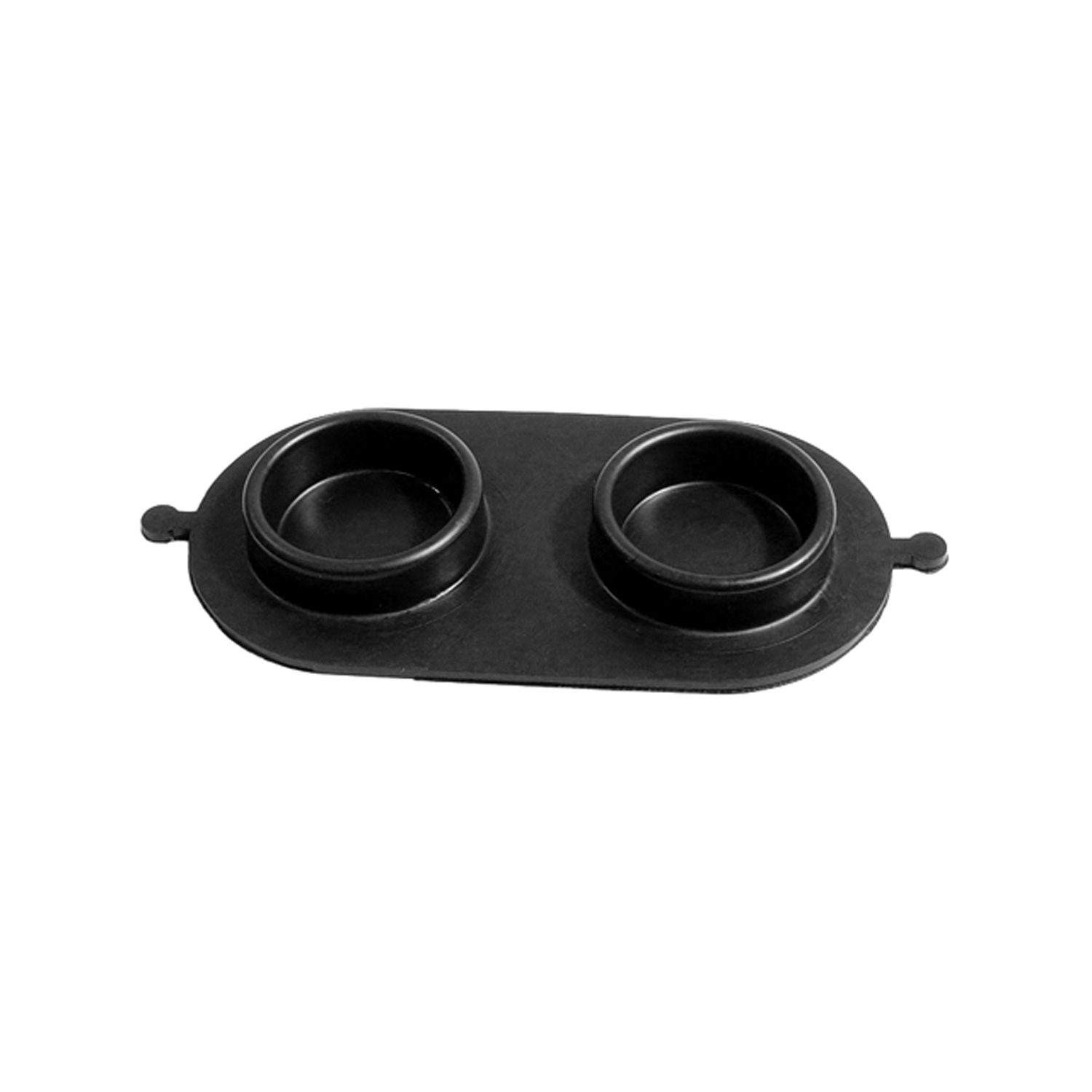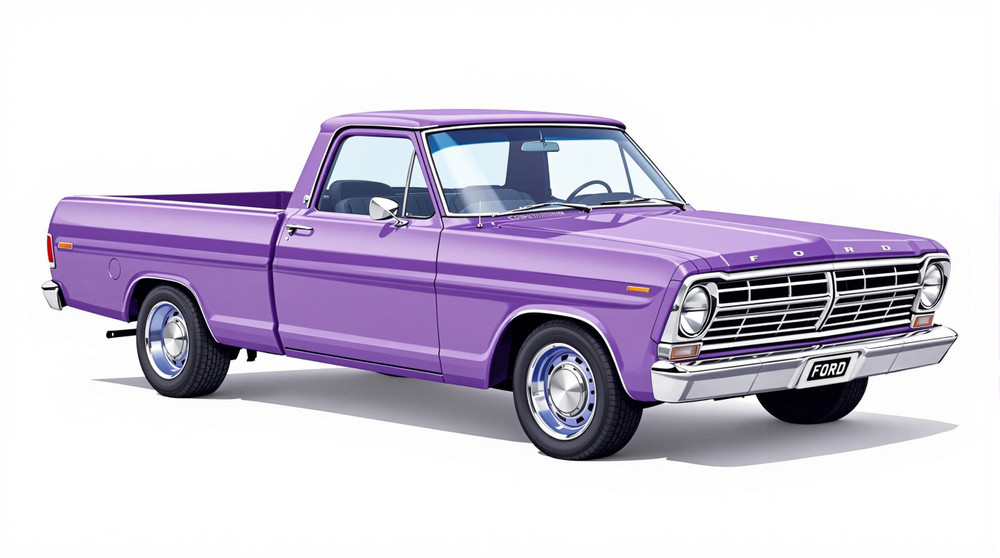Image of 1973 Ford Courier, Note: These illustrations use artistic license and may differ from actual historical models.
Performance Metrics
Fundamental Metrics
Emotional Appeal
MMP Rating
| Engine Specifications | |
|---|---|
| Engine: | 1.8L Mazda F/4 |
| Displacement: | 1.8L |
| Horsepower: | 74 hp |
| Torque: | 92 lb-ft |
| Compression Ratio: | 8.6:1 |
| Ignition System: | Conventional |
| Cooling System: | Liquid-cooled |
| Performance Specifications | |
| 0-60 Time: | Estimated 20 seconds |
| 1/4 Mile Time: | Estimated 22 seconds |
| Top Speed: | 90 mph |
| Transmission and Drive | |
| Drive Type: | Rear-wheel drive |
| Transmission Type: | 4-speed manual |
| Fuel and Efficiency | |
| Fuel System Type: | Carburetor |
| MPG: | Estimated 20-25 mpg |
| Dimensions and Brakes | |
| Brakes: | Front disc, rear drum |
| Wheelbase: | 102.6 inches |
| Weight: | 2,800 lbs |
Note: Specifications for classic cars are given to the best of our ability, considering the limited and variant data available.
Unearthing the Gem: The 1973 Ford Courier
When the open road beckons, few vehicles answer the call quite like the 1973 Ford Courier. This compact pickup truck, a product of a collaboration between Ford Motor Company and Mazda, represents a pivotal moment in automotive history. Born during an era of oil crises and a burgeoning need for fuel efficiency, the Courier emerged as Ford's response to the growing demand for smaller trucks.
While Ford is an American icon, the Courier's roots are a blend of American ingenuity and Japanese craftsmanship. It was essentially a rebadged Mazda B-Series, tailored for the North American market. This cross-continental partnership was a strategic move that allowed Ford to compete with other small pickups infiltrating the U.S. market from overseas. A unique fact that might surprise enthusiasts is that the '73 Courier was among the first fruits of this Ford-Mazda alliance, setting the stage for future collaborations.
Design and Innovation
The 1973 Ford Courier's exterior styling was simple yet functional, with a boxy silhouette that maximized cargo space within its compact dimensions. Its utilitarian design was complemented by a modest yet comfortable interior, featuring durable materials built to withstand the rigors of daily use. Technological features were sparse compared to modern standards, but for its time, it offered what was necessary for a work-oriented vehicle.
Color options ranged from classic whites and blues to more vibrant hues, with choices like "Bright Lime" catching the eye of more daring consumers. The most iconic body style was the standard two-door pickup with a long bed, which became synonymous with the Courier's practical appeal.
Historical Significance
The 1973 Ford Courier didn't just transport goods; it carried with it a legacy of change in the automotive world. It challenged the status quo by proving that smaller could be better, influencing a shift towards more fuel-efficient vehicles. Its introduction also marked a significant moment in international automotive partnerships, paving the way for future collaboration between American and Japanese manufacturers.
Performance and Handling
Under the hood, the Courier was modest, with performance figures that prioritized economy over exhilaration. The top speed and acceleration were adequate for its class, with 0-60 mph times that wouldn't win any drag races but were respectable for a utility vehicle. Handling was straightforward and reliable; it managed bumps and windy roads with a composed demeanor. Behind the wheel, drivers found a no-frills experience—the hum of the four-cylinder engine and the feel of a vehicle built for purpose rather than pleasure.
Ownership Experience
The 1973 Ford Courier found its niche as a daily driver for small business owners and as a dependable companion for weekend warriors. Its maintenance was relatively straightforward, endearing it to owners who appreciated its no-nonsense approach to repairs. While not typically seen as a show car or racing vehicle, its reliability made it a common sight on American roads.
Fun Facts
A little-known tidbit about the '73 Courier is that it occasionally found itself in celebrity garages, appreciated for its blend of practicality and understated charm. While it may not have set records in speed or sales, its endurance as a workhorse has earned it a loyal following. Common criticisms often focused on its lack of power and amenities, but these were also seen as part of its straightforward charm.
Collector's Information
Today, the 1973 Ford Courier is a rare sight, with production numbers not as high as its mass-produced brethren. Collectors might find values ranging widely based on condition and originality, with well-preserved examples fetching higher prices. As for appreciation, these trucks have begun to find their niche among classic car enthusiasts, leading to a gradual increase in value over time.
Conclusion
The 1973 Ford Courier stands as a testament to an era when automotive giants began to think small. It may not have been the flashiest or fastest vehicle of its time, but its impact on the industry and its lasting appeal to those who value simplicity and reliability cannot be overstated. As we look back on this humble workhorse, we're reminded that sometimes, the most significant revolutions come in the most unassuming packages.
1973 Ford Courier Catalog of Parts
 1973 Ford Courier Front Stabilizer End Repair Kit-BNK 24Front Stabilizer End Repair Kit. 22-piece set for two stabilizer bars. Contains all rubber bushings, washers, bolts and nuts, enough for one front end. Set
1973 Ford Courier Front Stabilizer End Repair Kit-BNK 24Front Stabilizer End Repair Kit. 22-piece set for two stabilizer bars. Contains all rubber bushings, washers, bolts and nuts, enough for one front end. Set 1973 Ford Courier Brake Master Cylinder Cover Seal. Replaces OEM #C7AZ2167-A-RP 2-BBrake Master Cylinder Cover Seal. Replaces OEM #C7AZ2167-A. Each
1973 Ford Courier Brake Master Cylinder Cover Seal. Replaces OEM #C7AZ2167-A-RP 2-BBrake Master Cylinder Cover Seal. Replaces OEM #C7AZ2167-A. EachWhy Choose Metro?
For over 100 years, Metro Moulded Parts has been the pinnacle of quality in classic car restoration parts. Our commitment to precision and authenticity in every component ensures a perfect fit and an OEM-level appearance.
- Expert Craftsmanship & Quality: Each part is a testament to our dedication to reliability and perfection, crafted from original designs and thoroughly tested.
- Advanced Technology: We use cutting-edge techniques to create flawless, long-lasting parts that surpass others in performance.
- SuperSoft Sponge – The Ultimate Door Seal: Not only are our door seals 30% softer than competitors', but they're also guaranteed to never leak. They effectively reduce wind and road noise, enhancing your classic car's comfort and driving experience.
- Proudly American: Our parts are a product of American craftsmanship, made in the USA with a spirit of excellence and heritage.
- Unrivaled Warranty: We back our products with a 30-year industry-leading warranty, a testament to our confidence in their quality.
Join us in preserving the legacy of classic cars with parts that are crafted for perfection, not just made.

